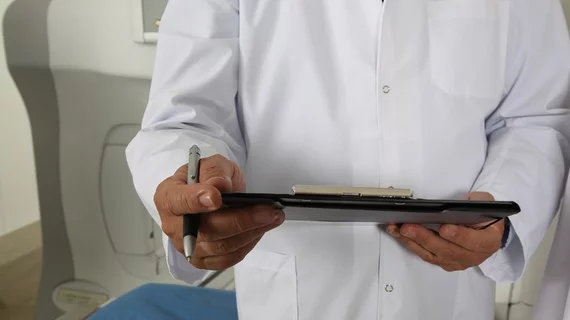Communication breakdowns to blame for many imaging-related safety events
Most safety events in medical imaging occur during the imaging procedure itself. However, when an actual or potential harm is identified after the episode of care is complete, the trouble most commonly traces back to faulty communication between radiologist and referrer.
Researchers at the Center for Evidence-Based Imaging in Boston found as much when they reviewed 11,570 safety reports submitted electronically throughout 793-bed Brigham and Women’s Hospital in 2015. Of these, 7 percent (854 events) were related to diagnostic imaging. JACR published the findings online Dec. 7.
Separating safety-event causes into five factor categories—"person," "organization," "task," "internal environment," and "tools and technologies"—lead author Ronilda Lacson, MD, PhD, and colleagues assigned a harm score, based on report submitters’ input, from 0 (no harm) to 4 (very serious harm).
They found imaging procedure topped the list of points of error at 54 percent, while 22 percent of all events were reported as potentially harmful (190 of 854 events).
The most common factor category, at 71 percent, was "person." This took in everything from technologists imaging the wrong side of the patient’s body to the patient fainting during the procedure.
Underscoring that the potential for harm was greatest when exam results were being conveyed to treating clinicians, the authors suggest more work is needed to improve that part of the process.
“Clearly, result communication does not involve simply signing and finalizing a radiology report in the electronic health record,” they wrote. “It requires receipt by the patient and an appropriate provider who can intervene on an actionable result. Overall, the assessment of these events is a first and critical step in developing such approaches as well as evaluating the efficacy of any system-level intervention.”

